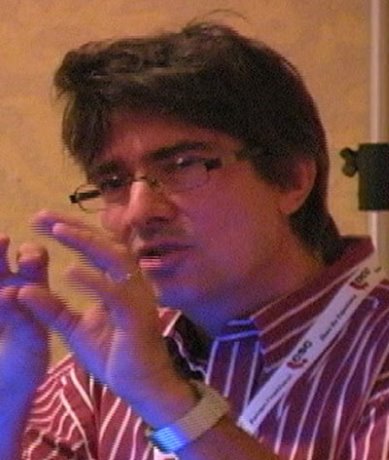Nanotechnologies, which are currently used in medicine, telecommunications and computing, have the potential to improve construction materials by changing their properties, according Peter Grutter, a McGill University physics professor who spoke at the Construction Specifications Canada conference in Montreal.
Nanotechnologies, which are currently used in medicine, telecommunications and computing, have the potential to improve construction materials by changing their properties, according to a physicist who spoke at the recent Construction Specifications Canada conference in Montreal.
Peter Grutter, a professor of physics at McGill University, characterized nanotechnology as the type of major advance — such as the railroads and computing — that comes about twice a century.
Nanotechnology, essentially manipulation at the molecular level during formulation, can change the properties of materials, including strength and melting point, he said.
“Fundamentally, you can change a lot of the properties, curing times, energy consumption in major building materials by using various types of nano materials” he said.
Grutter made his remarks during a presentation at the CSC annual conference at Montreal’s Delta Centre Ville.
He said silicon dioxide has a “huge potential benefit” because if you reduce the size of the silicon particles to nanometer-scale, you could form concrete with fewer pores.
“It will stop infiltration of water and that infiltration of water is what leads to degradation of concrete.”
Grutter added iron oxide can increase tensile strength and abrasion resistance of materials but he stressed he cannot predict how quickly advances in nanotechnology will be widely used in construction.
In addition to cost, there are concerns about contamination and the health effects on people exposed to nanomaterials, he said.
“In the construction industry, if you use nanoparticles, the workers can be exposed to these particles and someone might live there,” he said. “We might not see these potential benefits implemented in society that quickly.”
Assessing health risks is time consuming, Grutter said.
One area that could benefit from nanotechnology is photovoltaics and solid state illumination, Grutter said, because nanotechnology enables engineers to control the electronic properties of materials.
“Because you can control the light emission properties of these systems … you can you can build light-emitting devices that have very low power consumption and a very nice spectra.”
It can also be used in solar cells to generate photovoltaic systems that are much more efficient at converting sunlight into electricity, he said.
By changing the thermodynamic properties of materials, engineers could use nanotechnology to make copper capable of soldering connections at a much lower temperature, which in turn could increase the strength of the connection, Grutter said.
Another potential application is self-cleaning walls, where the material emulates the properties of hydrophobic leaves.
Instead of sliding off, water rolls off, and with surface tension the water brings dirt off with it, so it remains self cleaning.
“It would be really cool, because essentially what that means is that to clean off sides of buildings you would just have to wait for it to rain.”











Recent Comments
comments for this post are closed